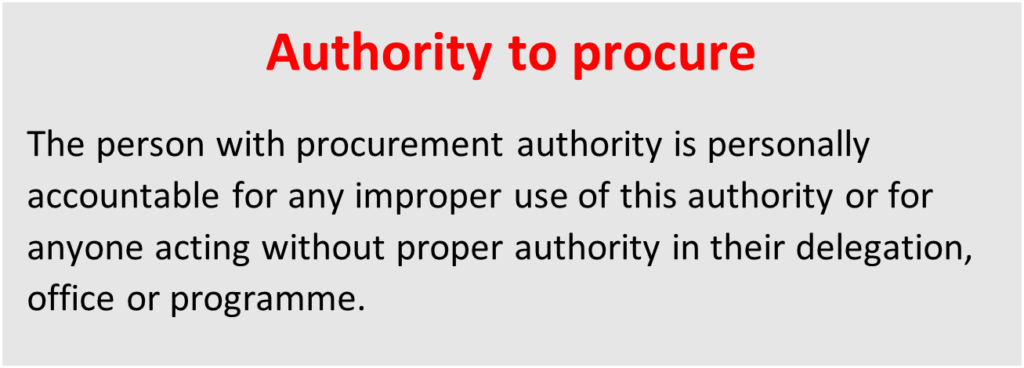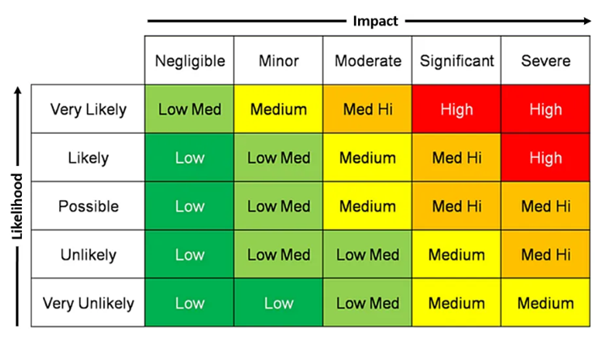How Can We Help?
Definitions and concepts
Procurement vs purchasing
The terms “procurement” and “purchasing” are often used interchangeably but purchasing is just one of the many activities involved in procurement.
Procurement is concerned with acquiring the goods, services and work that are vital to an organisation. Procurement encompasses both sourcing and purchasing.
Sourcing is a set of activities conducted before purchasing, usually including market research.
It revolves around the needs definitions and formalisation of the relationship with potential providers of required goods and services.

Purchasing focuses on how goods and services are ordered and delivered.
At the time of purchasing, sourcing has usually either already been completed, or its requirement may have been waived under exceptional circumstances.

Roles and responsibilities
Roles and responsibilities evolve along the procurement cycle.
RACI matrices are used throughout this manual. They break a process into steps, specifying who is responsible, accountable, consulted and informed at each step of the process.
Sourcing RACI matrix
| SOURCING | Responsible | Accountable | Consulted | Informed |
|---|---|---|---|---|
| Needs definition | Requestor | Requestor | Technical adviser | Procurement lead |
| Category analysis | Procurement lead | Procurement manager | Technical adviser | Requestor |
| Supplier identification | Procurement lead | Procurement manager | Technical adviser | Requestor |
| Request for quotes | Procurement lead | Procurement manager | Requestor | Requestor |
| Contract negotiation | Procurement lead | Procurement manager | Legal | Finance Requestor | Requestor |
| Contract management | Procurement lead | Procurement manager | Legal | Requestor |
| Supplier management | Procurement lead | Procurement manager | Technical adviser Requestor | Requestor |
| Risk management | Procurement lead | Procurement & supply chain dept. | Legal | Finance Requestor | Requestor Finance |
Available to download here.
Purchasing RACI matrix
| PURCHASING | Responsible | Accountable | Consulted | Informed |
|---|---|---|---|---|
| Needs definition | Requestor | Requestor | Technical adviser | Procurement lead |
| Raise requisition | Requestor | Requestor | Technical adviser | Procurement lead |
| Obtain internal approvals | Requestor | Requestor | Budget holder | Finance | Technical adviser |
| Raise purchase order(s) | Procurement lead | Procurement & supply chain dept. | Budget holder | Finance Requestor | Requestor |
| Goods reception | Warehouse Proc. lead | Requestor | Procurement & supply chain dept. | Technical adviser | Requestor |
| Payment | Finance lead | Finance dept. | Procurement & supply chain dept. | Requestor |
Available to download here.
Authority to procure
Authority to conduct procurement includes entering contracts, negotiating them or amending them and inviting suppliers to bid for contracts for the organisation.
Authority to procure is usually, but not exclusively, held by the logistics division.
The Grant Agreement Document (GAD) that the British Red Cross signs with the , or may also delegate procurement authority, by which the British Red Cross allows partners to conduct procurement activities with funds that it provides to them.

Authority to procure must be stated in job descriptions for roles which include procurement responsibilities.
The programme manager can propose a list of staff who should be given authority to procure.
In all cases, the regional logistics coordinator at the British Red Cross should be consulted by the programme manager when allocating authority to procure.
It is good practice to keep records of authority to procure – staff with authority to procure should fill out a Delegation of procurement authority, to be signed off by the head of logistics and head of programme as applicable.
When the British Red Cross signs an integration agreement with the IFRC in a country where the British Red Cross works with the (in other words, a multilateral partnership), the integration agreement sometimes includes procurement rules. In this case, the IFRC’s procurement procedures apply to British Red Cross-led procurement. This is also the case when NS staff conduct procurement under a British Red Cross-funded programme.
Where the IFRC is not part of the partnership, the applicable procurement thresholds will be defined in the GAD with the PNS (this is called a bilateral partnership).
Procurement principles
Principles of organisation:
- placing the requirements of the British Red Cross at the heart of what we do
- managing our suppliers in a way that mitigates the exposure to any risk
- driving value for money
- enabling effective competition that is open, fair and transparent
- driving continuous improvement that delivers innovative solutions and sustainable benefits.
General procurement principles:
- proportionality – the larger the risk, the more complex the process
- fairness – all suppliers are treated equally
- transparency – all suppliers receive the same information
- value for money – the best possible quality at the best possible price, for the best possible impact
- segregation of duty – different decision-makers along the process
- respect for applicable framework.
Risk management
Identifying risks
All procurement activities present different levels of risk to the organisation conducting them.
Before starting the procurement process, it is important to assess that risk and the appetite there is to expose the organisation to it.
Adopt a risk-based approach that considers different types of risk and the appropriate mitigating actions to adhere to the general and organisational procurement principles.
There are different types of risks in procurement:
Procurement risks:
Financial
- relates to the total value of the procurement
- particularly high in cash transfer programmes where the total value of transfers may have to be paid in advance
Type of goods
- some goods are “riskier” than others to procure
Supply chain
- actors involved in the supply chain, transport needs, etc.
Payment recipient
- investigation into ownership of engaged companies may be required
Country of origin/destination
- legal framework for manufacturing, shipping or quality management may be below acceptable levels
Programmatic risks
- regardless of value, a specific procurement being delayed or compromised can put the entire programme at risk.
Managing the identified risks
Use a risk management matrix and discuss options to mitigate risks with the procurement lead.
Use a risk assessment tool to capture these factors and include the findings in a programme risk register.
Remember
Risk Rating = Likelihood x Impact

Available to download here.
Possible outcomes of the risk analysis are:
- The level of risk is acceptable to conduct the procurement.
- The procurement process needs to be flagged on a risk register for the consideration of management.
- The procurement process should be cancelled.
The decision must be made by the programme manager, in consultation with the procurement and finance teams.
Due diligence
Due diligence involves taking steps to be certain that the relationship with the supplier does not put the organisation at risk. This is done through a comprehensive appraisal of a supplier that looks at assets, liabilities and processes against financial, ethical and environmental considerations.
When due diligence is considered as part of a procurement process, it is the responsibility of the procurement lead to conduct it. The due diligence framework in the British Red Cross is managed by the corporate procurement team (CPT), and the international department supports the implementation of systems to ensure that due diligence is conducted appropriately.
Fraud and corruption
An anti-fraud and corruption policy should be in place in each partner organisation that is involved in procurement activities. The British Red Cross anti-fraud and corruption policy sets out our approach to preventing fraud and corruption within the organisation, as well as how to manage it if it occurs. It is available from RedRoom or from the logistics team for reference.
Conflict of interest and confidentiality agreements
Conflict of interest is a form of corruption and occurs when someone conducting a procurement process has an interest in driving it in a specific direction, based on relationships, financial interests or favouritism.
Anyone involved in procurement should be aware of emerging conflicts of interest and make them explicit. They must also declare any way in which they might have a conflict of interest in a particular procurement process, through a declaration of conflict of interest form (see conflict of interest policy).
All instances of failure to disclose a conflict of interest will be investigated in line with the established disciplinary process, which may lead to dismissal where gross misconduct is proved.
For details on Due diligence and counter-terrorism checks, go to the Supplier due diligence section of Sourcing for procurement.
Read the next section on Planning procurement here.
Related resources
Download useful tools and templates here

